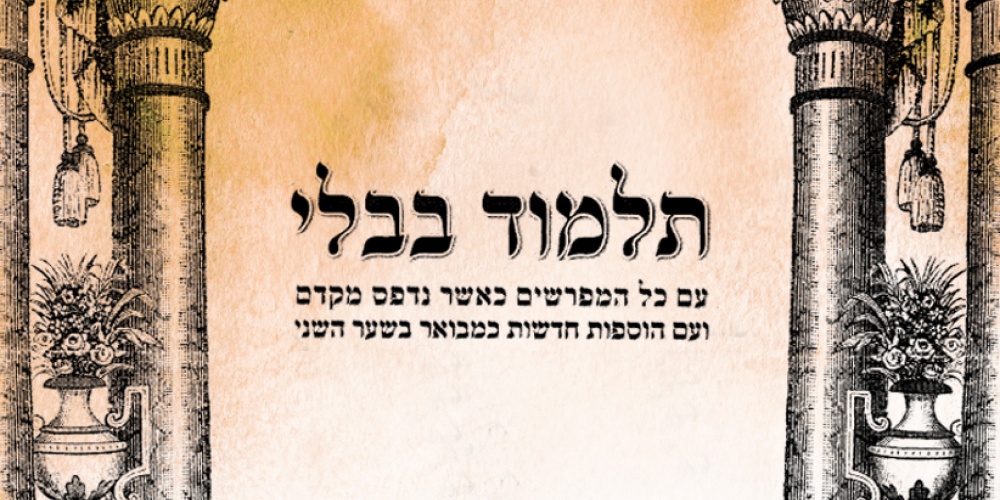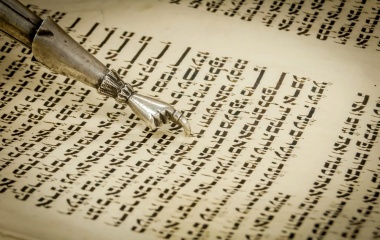
It is hard to imagine more influential institutions of Jewish learning than those of Beit Hillel and Beit Shammai. These two great schools set in motion much of the foundation of the Oral Law. It was regarding their some 316 disputes recorded in the Mishna that a heavenly voice declared, “These and those are the words of the living G-d” (Eiruvin 13b).
With the Torah consisting of so much that is gray, no one view can capture the totality of Jewish thought. It is only through the study of various (and differing) opinions that we can begin to understand the “words of the living G-d.” Beit Shammai has good reason for arguing that we should light eight Chanukah candles on the first night, or that the bracha mekadesh haShabbat should be said before the boreh pri hagafen at kiddush on Friday night, as does Beit Hillel for saying the opposite. In practice, we must choose to do one or the other, and the halacha has chosen, with some exceptions, to follow the view of Beit Hillel.
Debate is the hallmark of Talmudic learning. One has to search far and wide to find chapters of Mishna with no debates, and the Mishna faithfully records even those views that are rejected. If the Mishna is a legal code, why bother recording those views that we do not follow? One could answer that the Mishna is much more than a legal code and reflects not only legal practice, but legal theory as well. For that, all views need to be recorded.
Yet interestingly, the Mishna in masechet Eduyot asserts that these rejected opinions do have halachic import. “That if a [later] beit din sees [agrees with] the words of the individual, and relies on it” (Eduyot 1:5). Under normal circumstances, a latter court may repeal a rabbinic enactment[1] of a previous court only if it “is greater in wisdom and numbers” than the original court. However, this onerous condition is not necessary if the Mishna records these “rejected” views. With such a view on the record, a later-day court can rule in accordance with it, regardless of it having been previoulsy rejected[2].
This was not the case regarding disputes between Beit Hillel and Beit Shammai. The views of Beit Shammai can have no bearing on practice, and a later court may not rely on their view, even if the later court thinks that in practice, it is more correct. This unique situation was likely due to the prominence of Beit Shammai, the members of which were almost as numerous as Beit Hillel and, as the Talmud notes, actually “sharper” than the Beit Hillel (Yevamot 14a). There is little to fear from occasionally ruling in accordance with a minority view held by one person. It is precisely because Beit Shammai is “also right”, and is much more than a random opinion, that our Sages were forced to rule “Beit Shammai in the place of Beit Hillel is not a valid teaching” (Berachot 36b) and cannot be relied upon. Had they not done so, the Jewish people might have split into factions, with “the Torah becoming like two Torot” (Sanhedrin 88b).
It was the students of Hillel and Shammai, not Hillel and Shammai themselves, who were wont to argue. “Hillel and Shammai argued in only three places” (Shabbat 14b).
These three debates are first recorded as the opening to masechet Eduyot, with the first of the debates also serving as the opening to masechet Niddah. “Shammai says: All the women, their time is enough; and Hillel says, from examination to examination[3]”.
As we discussed in our last post, when a woman has a flow of menstrual blood, she becomes a niddah (or a zava). As it is possible for a woman to have a flow without actually realizing it, it was laudatory for women to check themselves for any possible bleeding. This was true both for those who had regular cycles and those who did not. It is regarding the latter case that we have our first debate between Shammai and Hillel. Shammai is of the view that despite the irregularity of one’s menstrual cycle, one only becomes tameh at the time that one is first aware of one’s bleeding. Hillel, on the other hand, is concerned that her bleeding may have started without her noticing it. Hence, we must declare that her tameh status began from the last time she checked herself, “even if it was many days ago”. Thus, anything with which the woman came into contact since her last bedikah must be considered tameh.
Interestingly, in this debate, the halacha follows neither the view of Shammai nor Hillel, but that of the Sages, who argue that her tumah status begins 24 hours prior to her noticing bleeding, or from the last time she checked for blood if that was done within the past day.
Moreover, in the other two debates between Shammai and Hillel – regarding the amount of flour one needs to knead to be obligated in the mitzvah of challah, and how much “drawn water” invalidates a mikvah – the halacha also follows the dissenting third view of the Sages. It is almost as if Jewish law would tolerate no practical disputes between Hillel and Shammai. That legacy was left for their students.
[1] While it may seem counterintuitive, see here for discussion of how this requirement holds only regarding rabbinic enactments, but not for interpreting biblical laws.
[2] Interestingly, Rabbi Yehuda disagrees. According to his reading, the reason an individual view is recorded is that should a future beit din rule in accordance with this minority view, they would be told that this view had already been expressed and rejected and can only be repealed by a beit din of greater stature.
[3] The Tosefta (Eduyot 1:1) describes how upon arriving at Yavneh the Rabbis, fearful of people “seeking words of Torah but unable to find them”, began compiling a list of teachings “starting with Hillel and Shammai.” As the list of teachings is based on the author and not the topic, Eduyot is the most subject-diverse of the mishnayot. Serving as the first compilation of what later became 63 masechtot, most of these same mishnayot appear in the masechtot devoted to the particular topic at hand.



